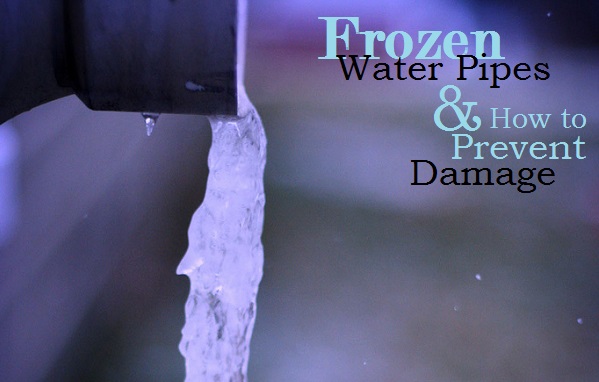How To Prevent Damage from Frozen Water Pipes
Cary, NC — Temperatures dropped into the single digits in Cary last week, causing frozen water pipes and, in return, big problems for many homes and businesses in the Triangle. Here are the facts of frozen water pipes and how to prevent them in the future.
60 People Without Water in Cary
WRAL recently released that last week, on Friday, February 20, 2015, Town of Cary crews responded to more than 60 calls from people without water.
Raleigh received over 100 complaints.
Needless to say, frozen water pipes pose a problem–both during freezing temperatures and after, when pipes begin to thaw. When do water pipes freeze, why do they become damaged, and how can you prevent that and/or and water loss during cold weather? The American Red Cross shares some helpful advice to prepare for future freezes.
Why are Frozen Pipes a Problem?
Water expands as it freezes, putting pressure on the pipes containing it. Expanding water can cause even metal pipes to break, especially those exposed to harsh, low temperatures. While outdoor pipes are the most likely to break, damage can occur in your home, too.
Water pipes in unheated areas like garages, basements, attics, or kitchen cabinets are the most common of victims. Pipes can freeze in temperatures as low as 20 degrees, but last week’s single digit temperatures caused many instances of frozen pipes.
Preventing Frozen Water Pipes
Prior to the onset of freezing weather, take these precautions to avoid pipe damage:
- Remove, drain, and store outdoor hoses.
- Close indoor valves that support outdoor hose bibs.
- Open outdoor hose bibs and keep them open.
- Check water supply lines under kitchen and bathroom sinks, in basements, and in other unheated areas. Hot and cold water pipes in these areas should both be insulated.
- Consider installing products to insulate at-risk water pipes.
The work doesn’t stop once the cold weather surfaces. During freezing temperatures:
- Keep garage doors closed to protect water supply lines.
- Open kitchen and bathroom cabinet doors to allow warm air to circulate around the plumbing (be careful to remove products that could be harmful to young children or pets).
- Let cold water drip from faucets served by exposed pipes.
- Don’t reduce thermostat temperatures overnight.
Thawing Frozen Pipes
If you turn on your water and only a trickle comes out, the pipe is probably frozen. WRAL explains that, “If a pipe is frozen on the utility’s side of the meter, then the town is required to fix it, while the area from the meter to the building is considered private property.” Private property pipes need to be fixed by the owner or by a plumber.
If you suspect a frozen pipe, try the following:
- Keep the faucet open. Running water through the pipe will help melt any ice inside of it.
- Apply heat to the section of the pipe by wrapping a heating pad or towels soaked in hot water around it. You can also use a hair dryer to melt the ice.
- Apply heat until full water pressure is restored.
If you’re not able to restore water flow, if the frozen area is inaccessible, or if you can’t locate the frozen area, call a licensed plumber.
Visit the American Red Cross online for more information.
————————————————————————————————————————————-
Photo by Ginny.



